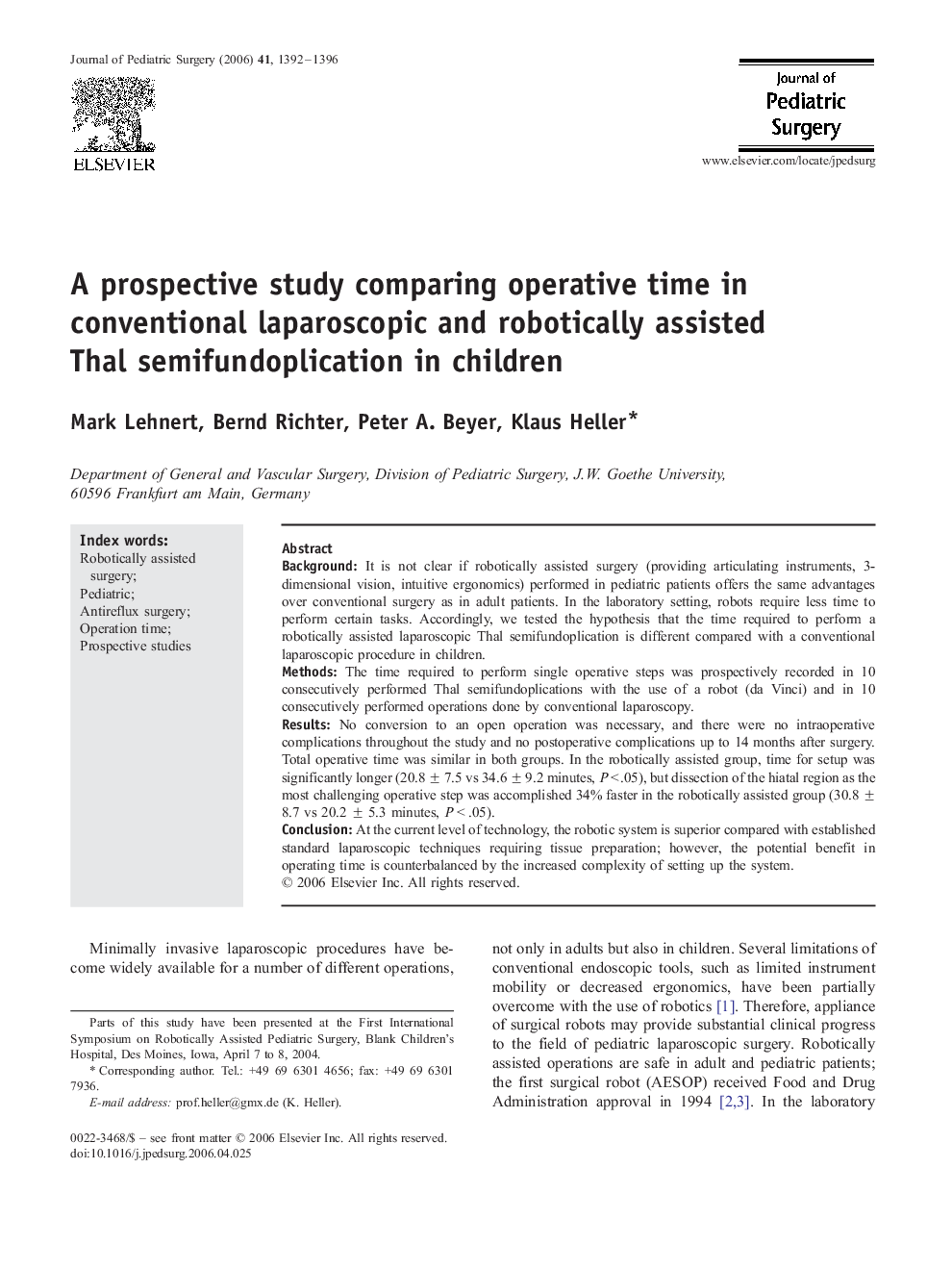| Article ID | Journal | Published Year | Pages | File Type |
|---|---|---|---|---|
| 4159949 | Journal of Pediatric Surgery | 2006 | 5 Pages |
BackgroundIt is not clear if robotically assisted surgery (providing articulating instruments, 3-dimensional vision, intuitive ergonomics) performed in pediatric patients offers the same advantages over conventional surgery as in adult patients. In the laboratory setting, robots require less time to perform certain tasks. Accordingly, we tested the hypothesis that the time required to perform a robotically assisted laparoscopic Thal semifundoplication is different compared with a conventional laparoscopic procedure in children.MethodsThe time required to perform single operative steps was prospectively recorded in 10 consecutively performed Thal semifundoplications with the use of a robot (da Vinci) and in 10 consecutively performed operations done by conventional laparoscopy.ResultsNo conversion to an open operation was necessary, and there were no intraoperative complications throughout the study and no postoperative complications up to 14 months after surgery. Total operative time was similar in both groups. In the robotically assisted group, time for setup was significantly longer (20.8 ± 7.5 vs 34.6 ± 9.2 minutes, P < .05), but dissection of the hiatal region as the most challenging operative step was accomplished 34% faster in the robotically assisted group (30.8 ± 8.7 vs 20.2 ± 5.3 minutes, P < .05).ConclusionAt the current level of technology, the robotic system is superior compared with established standard laparoscopic techniques requiring tissue preparation; however, the potential benefit in operating time is counterbalanced by the increased complexity of setting up the system.
